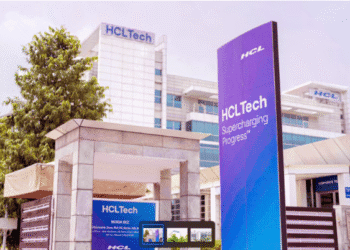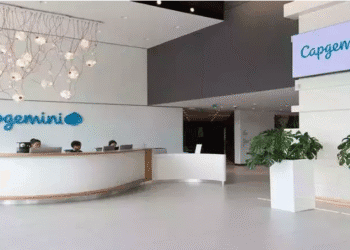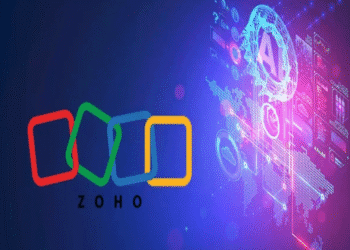By Ishan Talathi
CEO & Founder, Leapswitch Networks
CIOs today stand at a crossroads, under pressure to deliver rapid digital transformation while grappling with legacy infrastructure and tightening compliance requirements. Executives’ mandates to digital transform faster with newer and newer technologies, AI-based insights, and data-based decision making are one extreme. Ancient infrastructures groaning under new workloads and more stringent data localisation regulations are the other extreme.
It is an actual showdown. It is the new norm of managing enterprise IT today. Firms can design sophisticated digital roadmaps, but without a strategy that spans infrastructure modernisation and data localisation, it stalls, costs escalate, and regulation risk accumulates.
The work is not just to embrace cloud computing. It is to modernise infrastructure that enables digital transformation, but not at the expense of local data compliance. The CIO must treat modernisation and localisation as two sides of the same coin. With this, organisations can go for speed, efficiency, and resilience simultaneously.
Why Infrastructure Modernisation is the Hidden Lever in Digital Transformation
Adoption of cloud has been well accepted as the centre of digital transformation, but quite a number of times, without modernisation, cloud migration could be aimed at migrating old problems onto a new platform. Old infrastructure is expensive to upkeep, rigid, and not strong enough to bear the pressures of AI, ML, and real-time analytics.
A few industry trends that are aware of this fact are as follows:
- Cloud cost optimization is a slippery customer: 84% of the organisations in 2025 reported that they were unable to optimise cloud expenditure (Flexera). In the absence of self-control of modernisation — tagging, observability, and joined-up FinOps workflows — costs spiral out of control.
- Platform transformation creates an urgency of attention: Platform transformations create an increasing pressure, like new VMware licensing model updates and other software launches make CIOs question possessing, scaling, and operating infrastructure.
- AI workloads drive new requirements: IDC predicts AI and ML workloads to account for as much as 25% of cloud incremental spending, requiring GPU acceleration, elastic scaling, and high-performance compute.
- Governance must be shifted left: Growing cloud spending is a result of the necessity for real-time financial governance as part of CI/CD pipelines to prevent wastage and overspend.
Modernisation is not an IT ancillary project — it’s digital transformation. So, in its move to the cloud, an outdated modernised infrastructure bides time for improved performance, lower cost, and operational responsiveness rather than creating a new architecture of legacy inefficiencies.
Data Localisation: From Compliance Burden to Strategic Advantage
The law of data localisation with modernisation is redesigning the architecture of business infrastructure. The law is no longer intangible compliance but an important strategic element that is influencing performance, dependability, and customer trust.
- India: Reserve Bank of India (RBI) ordered local payment transaction data to be retained inside India. With more than 19 billion transactions on UPI per month, that is about USD 293 billion (RBI, March 2025), the order will be difficult for any system to overlook in terms of the volume of operations.
- CERT-In: There is a requirement for large logs to be retained by businesses for 180 days, and observability as a feature for performance becomes a compliance requirement.
- Digital Personal Data Protection Act (2023): Deploys new sensitive and critical personal data mandates that impinge upon companies’ analytics strategy and data storage infrastructure.
In the world at large, there are some guidelines like the EU–US Data Privacy Framework to provide space for cross-border data assignments with still encryption, isolation, and sovereignty controls residing with the company.
Localising data is typically viewed as a compliance task. As a tool to control, it may be leveraged as an efficiency and trust differentiator. Regulating data locally reduces latency.
This initiative places customer trust and advances audit mechanisms into an easy method. Anonymised datasets will possess worldwide replicas in AI training or in such analytics, thereby making it possible for organisations to innovate without undermining compliance.
Common Challenges CIOs Face
The move towards digital is slowed with firm intent to modernise.
Data localisation is typically viewed as a compliance function. Well-governed, it can be used as an efficiency and trust differentiator. Regulated data localised, minimising latency. This effort puts customer trust and advances audit processes in an effortless way. Anonymised datasets will have worldwide copies in AI training or in such analytics, thereby allowing companies to innovate without compromising compliance.
Typical Challenges CIOs Face
The shift towards digital is hindered by a firm intention for modernisation. Some examples of problems are stealth costs or governance issues, which occur when an organisation highly relies upon hyperscalers. Additionally, system administrators are most often ignorant or overlook the fact that they need to keep logs, with all compliance needs, until audits expose the gaps.
Also, borderless centralisation of analytics can appear to be efficient but brings latency and regulatory risks, making the infrastructure strategy complicated. These issues bring to the forefront the imperative necessity of bringing infrastructure modernisation and localisation of data into a single strategy so that performance, compliance, and scalability are tackled together instead of separately.
Even with modernisation intent, CIOs encounter recurring challenges:
- Over-reliance on hyperscalers: Gartner estimates up to 30% of enterprise cloud spend is wasted due to hidden costs and poor governance. Unclear localisation guarantees further compound risk.
- Incident response gaps: Log retention mandates are frequently underestimated, only coming to attention during audits or regulatory reviews.
- Centralised analytics reflex: Moving raw data across borders may seem efficient, but it introduces compliance liabilities and latency issues.
These challenges underscore the need for an integrated approach. Modernisation and localisation cannot be addressed separately if digital transformation is to succeed.
CloudPe: Modernisation with Built-in Localisation
CloudPe, essentially an exclusive joint venture by Leapswitch Networks and Strad Solutions, furnishes CIOs with a platform that brings together modernisation with localisation-compliance aspects.
Key Features:
- Downtime-free scaling: CloudPe enables expanding workloads without interrupting ongoing operations. Scaling any application, database, or service is in real time without affecting any ongoing operation, nor so to speak, which is a critical capability to enterprises that experience spikes in traffic from seasonal demand on their cloud service or when a workload faces a tedious process or an AI-heavy process, therefore not deriving any interruption in their digital transformation flow.
- Triple-replicated storage: Data durability and reliability are what lie at the heart of CloudPe’s triple-replicated storage system. Every piece of enterprise data is stored in three separate racks. This prevents hardware failures, accidental deletions, and system outages from affecting data. Mission-critical information will, therefore, always be accessible to the organisation. As a result, organisations get to put their full faith in their recovery from disasters and business continuity planning.
- Private VLAN with high availability: CloudPe provides secure, isolated network environments via private VLANs available on a high-availability basis. Enterprises operate sensitive applications without interference, unauthorised access, or even downtime. By dividing workloads, certain compliance requirements are met on one hand; on the other, operational efficiency is maintained so that during infrastructure disruption, the critical process remains secure and accessible.
- Snapshot backups: The snapshots offer a backup of any time-sensitive changes. Procedural synchronisation must be enforced. Basically, at set times, the system holds snapshots of various states. In that way, the system can minimise downtime during recovery, process audits, and achieve a speedy transition to operations.
- GPU acceleration: For AI, ML, and compute-intensive workloads, CloudPe offers GPU acceleration to optimize performance. High-speed GPUs reduce processing time, enhance the training of machine learning models, and accelerate analytics. Enabling an organisation to undertake high computational tasks efficiently supports innovation, faster decision-making, and deployment of intelligent applications at scale.
- Transparent Economics: In CloudPe, building dependence on hyperscalers is avoided, while otherwise ensuring predictable costs. Independent benchmarks claim 50-70% cheaper pricing than that set forth by cloud providers, with no sneaky egress fees.
- Localisation Capabilities: In different sectors like payments, transaction data is allowed to stay within Indian regions so as to comply with RBI regulations. Logs are retained for 180 days in accordance with CERT-In regulatory requirements, while anonymised datasets may be copied all around the globe for analytical or AI training purposes. Thus, this approach modernises yet localises within a single platform, equipping CIOs with the conversion power they seek, all compliant, of course.
The Broader Leapswitch Ecosystem
Cloudpe is part of a larger Leapswitch Networks portfolio aimed at addressing different workloads and modernisation needs:
- IaaS/Bare Metal: Dedicated servers for latency-sensitive or regulated workloads.
- CloudJiffy PaaS: A platform designed for developers, with CI/CD capabilities, auto-scaling, and a click-and-go application stacks mechanism.
- Managed Services: 24-hour setup and support for hybrid environments and modernisation programs.
- Backup-as-a-Service: Providing location-independent, redundant version-controlled backups with instant recovery and prolonged retention.
In conjunction, these offerings provide for CIOs the very IOD of modernisation whereby compliance and data sovereignty are integrated into the infrastructure strategy itself.
Implementing a Modernisation and Localisation Playbook
To ensure transformation of infrastructure modernisation corresponds closely to localisation in practice, some considerations include:
- Classifying Workloads gets classified according to specific sovereignty, latency, and elasticity needs. Deployment paths are defined for VMs, Kubernetes clusters, and PaaS workloads.
- Embedding FinOps into CI/CD pipelines for automated budget tracking, tagging, and cost dashboards.
- Localisation by design: Store regulated data within-country and replicate only anonymised datasets across the globe.
- Audit resilience: The disaster recovery and backup processes would need to abide by the guidelines of the RBI and CERT-In.
- Reduction of hyperscaler dependency: Usage of OpenStack, bare-metal, and private entities for cloud becomes an option where control and cost impact are considered.
With the holistic approach, the act of modernisation from the localisation perspective would be able to reinforce each other rather than create tension within the IT operations.
The Strategic Advantage
CIOs who integrate infrastructure modernisation and data localisation gain several advantages:
- Faster digital transformation with fewer operational delays.
- Predictable costs and reduced risk of budget overruns.
- Compliance is built into operational design rather than retrofitted after the fact.
- Improved performance and customer trust through localised data storage and reduced latency.
- Agility to adopt AI, ML, and other compute-intensive workloads efficiently.
In essence, infrastructure modernisation and data localisation are not separate obligations; they are strategic levers that, when united, accelerate digital transformation.
Conclusion
CIOs who fail to integrate infrastructure modernisation with data localisation risk stalled transformation, spiraling costs, and regulatory exposure. Those who succeed will lead with faster execution, lower risk, and greater trust.
CloudPe and the broader Leapswitch ecosystem equip CIOs to make this leap today, delivering modernisation without lock-in, localisation without friction, and performance without compromise. The organisations that act now will define the next wave of digital innovation. This instalment focused on the need for cloud adoption. The future of enterprise IT would hence be modern, sovereign-ready, and globally scalable for the changes set forth by the digital business environment. CIOs promoting this integrated approach will be the ones capable of making their organisations agile, compliant, and prepared to ride the next





















